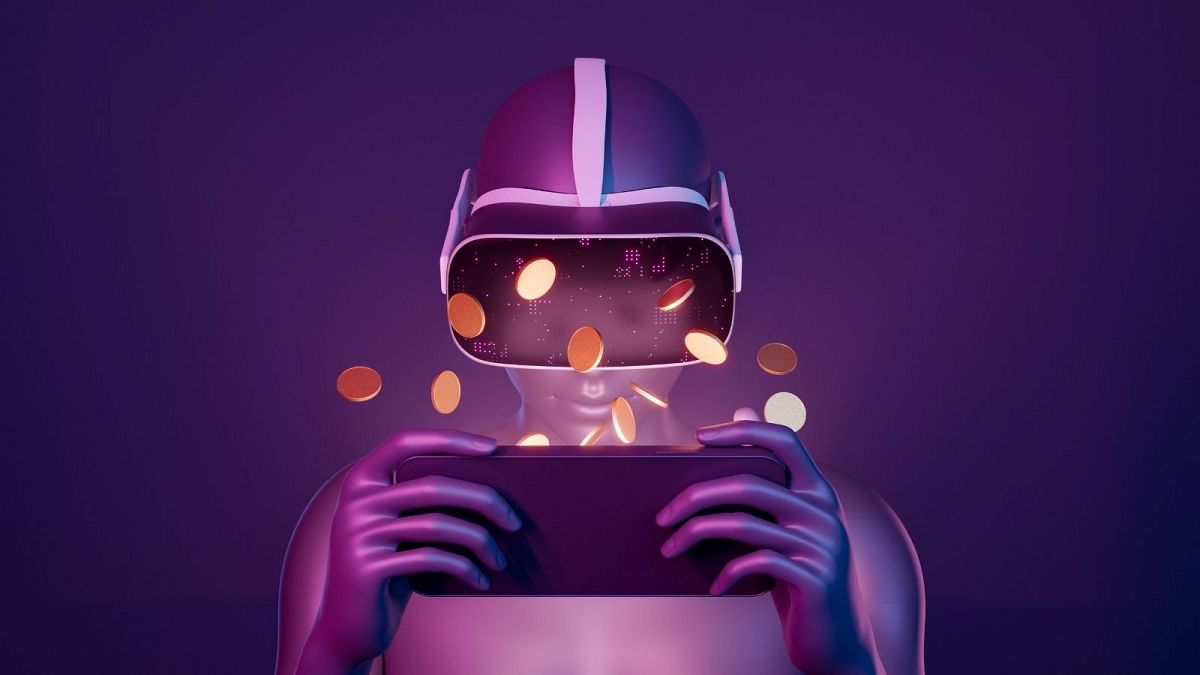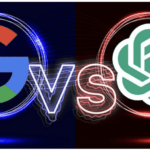The social media juggernaut Facebook has officially rebranded itself under the new moniker “Meta” as part of an ambitious embrace of the metaverse – the nascent vision of interconnected virtual worlds offering radical new ways for people to seamlessly transcend physical and digital realms.
Hold on tight as we peel back the layers on Facebook Rebrands as “Meta,” Embracing the Metaverse Future and explore what this rebranding metamorphosis means for the multiverse tech titan and its 3 billion active users. This isn’t just a new corporate logo – it’s a definitive pivot towards propelling the metaverse into the mainstream and establishing Meta’s pole position in the next great internet revolution.
What is the Metaverse and Why is it Important?
While the metaverse may conjure fantastical images of sci-fi virtual reality landscapes, its core represents the convergence of foundational technologies paving the way for the next paradigm shift in how we compute, interact, create, and experience digital realms.
At its most fundamental level, the metaverse constitutes interconnected 3D virtual worlds offering embodied internet experiences transcending mere flat 2D screens. Using mixed reality combining augmented and virtual reality displays, users gain rich spatial computing experiences where digital and physical environments seamlessly blend and coexist.
Empowered by decades of advancements in real-time 3D graphics, five key technological cornerstones enable the metaverse concept:
Virtual Reality Headsets: Immersive stereoscopic displays create realistic virtual presences and visualizations. Meta’s Oculus Quest is a pioneering all-in-one consumer headset.
Augmented Reality Glasses: Transparent optics overlay digital enhancements atop the physical world, enabling AR interactions with the environment around you. Like Microsoft’s HoloLens.
Lifelogging Devices: Mobile sensors, cameras, and IoT continuously capture and recreate digital representations of spaces and objects in the physical world around us.
Haptic Interfaces: Next-generation wearables and controllers allow realistic gesture and touch-based inputs plus tactile force feedback for physical interactions in virtual worlds.
Digital Humans: Metaverse experiences revolve around high-fidelity interactive avatars, evolving from today’s game characters into hyper-realistic digital proxies we directly inhabit and control.
Supporting these core technologies is artificial intelligence, machine learning, ubiquitous high-speed connectivity, and web3 decentralization philosophies enabling metaverse platforms to transcend closed ecosystems into an open, interoperable network of virtual realms.
While still nascent, an accessible metaverse filled with photorealistic embodied digital spaces increasingly inseparable from reality represents a potential paradigm shift in computing every bit as disruptive as the modern internet itself. And Meta (formerly Facebook) intends to be at the forefront driving adoption.
Why Did Facebook Rebrand as Meta?

Facebook’s rebrand as Meta parallels the company’s internal shifts to prioritize metaverse development after years of research into augmented and virtual reality initiatives. A few key factors drove this seismic shift and rebranding:
Distancing from Social Legacy: Dogged by unrelenting scandals over misinformation, data misuse, harassment, and other issues plaguing its core social platforms, a rebrand lets Meta distance itself from Facebook’s tarnished legacy by pivoting to novel emerging technologies like XR.
Reflect New Focus: Facebook’s brand was inherently limiting as its universe expanded beyond social networking through acquisitions like Oculus VR and ambitious future computing initiatives. “Meta” better encapsulates their new digital world focus.
Differentiation: By seeding “meta” into its lexicon, Meta differentiates its ambitious metaverse vision from broader XR efforts by rivals seeking to capitalize on the same wave. It’s a critical branding landgrab.
Signal Commitment: Adopting the name Meta signals founder Mark Zuckerberg’s definitive personal commitment to marshaling the company’s vast resources and talent behind not just building metaverse technologies, but owning the entire user experience.
Open Source Buy-in: The metaverse ethos emphasizes open, interoperable standards and decentralization. Meta’s rebrand aims to signal buy-in to web3 principles like user sovereignty over platforms, to counter skepticism from that community.
Reflect Structure: Meta has reorganized into a leaner dual product group structured around its Family of Apps (Facebook, Instagram, WhatsApp) and Reality Labs working on metaverse R&D. Meta encompasses both under a unified vision.
While some deride the rebrand as mere distraction from recent controversies, rebranding as Meta provides both internal rallying focus and external signaling that Facebook founders see intertwined virtual-physical digital worlds as the future computing paradigm.
What is Meta’s Vision for the Metaverse?

Facebook founder and Meta CEO Mark Zuckerberg has articulated a sweeping vision centered on evolving the company’s core social networking ethos into sophisticated embodied internet services optimized for rich immersive worlds blurring digital and physical experiences.
According to Zuckerberg, the metaverse represents the inevitable convergence of transformative technologies creating a unified virtual shared space spanning infinite digital realms. Within this convergence of immersive simulated universes, individuals maintain a persistent sense of virtual presence, operating through personalized 3D avatars they directly control.
This virtual inhabitation combined with spatial computing allowing digital objects to seamlessly integrate within physical environments unlocks new unprecedented ways to connect, communicate, collaborate, learn, and experience media beyond passive 2D screens or browsing the “flat” internet. Meta aims to evolve its existing social fabric into a boundless integrated metaverse ecosystem.
Zuckerberg outlines key metaverse features Meta envisions realizing:
Infinite Worlds: An expansive multiverse of interconnected photorealistic 3D worlds ranging from gaming, entertainment, social communities, workplace environments, education, and even digital representations of physical places – all explorable through a singular user experience.
Avatars Not Accounts: Rather than clunky accounts, identities seamlessly travel between worlds through persistent 3D avatars tailored for various environments – from professional workplace personas to imaginative fantasy game characters.
Boundless Creations: Intuitive creation and customization tools via spatial computing and haptic controls open possibilities for crafting boundless user-generated virtual items, destinations, and experiences not hindered by physical constraints.
Flexible Economics: An open economic framework powered by crypto and NFTs rewards creators and provides seamless interoperability of user-generated content, avatar assets, and digital purchases between platforms.
Ambient Computing: Beyond 2D videoconferencing, ambient computing blends virtual overlays into physical surroundings for immersive collaboration and social presence – from virtual offices to interactive recreation rooms for shared movie viewing.
Commerce Evolved: A major commercial paradigm shift towards experiential retail environments where virtual goods and immersive 3D environments converge. Shopping evolves from websites to interacting with products and brands through VR simulations.
Decentralized Governance: In embracing web3 values like open standards and decentralization, Meta’s metaverse vision revolves around community-governed virtual worlds led by creators rather than controlled by centralized platforms.
Intertwined Rather than Separate: Meta’s ambition catalyzes the ability to seamlessly transition between augmented physical realms and immersive virtual spaces. Computing is no longer an isolated digital interface, but deeply embedded into lived experiences.
While highly conceptual today, Meta’s metaverse ambitions encapsulate an expansive long-term vision to not merely extend today’s internet services into immersive 3D worlds, but to spawn a transformative computing paradigm blending real and virtual into a unified fabric integrating digital and physical experiences into a singular intertwined existence.
What Technologies is Meta Developing for the Metaverse?
Meta invested over $10 billion into metaverse-enabling technologies like virtual and augmented reality hardware, software, and research. Some key initiatives in their XR roadmap include:
Consumer VR Headsets: Meta’s flagship metaverse offering is its Oculus Quest 2 – an affordable wireless standalone VR headset syncing with PCs and mobile devices. Upcoming higher-end Project Cambria targets enhanced mixed reality experiences.
AR Glasses: The company is prototyping ultrathin AR glasses dubbed “Project Nazare” to overlay digital information onto physical environments without bulky headsets. Other projects explore holographic displays and immersive audio.
Haptic Gloves and Peripherals: Haptic research spans force feedback gloves allowing users to “feel” and manipulate digital objects in metaverse environments using their hands naturally.
Computer Vision: Capturing full digital representations of settings into metaverses requires advanced computer vision to perceive and scan entire scenes through sensors and cameras.
Embodied AI: Meta’s research explores lifelike embodied AI assistants and intelligent digital avatars enhancing immersion and natural interaction within metaverse experiences.
Metaverse Operating System: Code-named “Metaverse OS,” Meta aims to build both the underlying operating system and universal UI for seamless user experiences spanning limitless virtual worlds.
Developer Tools: For creators to build interconnected metaverse apps and worlds, Meta is developing tools, frameworks, and backend services like Presence Platform for synchronized physics, graphics, avatars, and environments.
Virtual Workplaces: Meta Horizon Workrooms provides an early taste of metaverse collaboration with mixed reality videoconferencing between desktop, VR, and physical spaces.
While the initial thrust focuses on refined consumer VR/AR technologies, Meta understands establishing robust developer ecosystems and standards for simulating physics, interactions, graphics, and avatars is equally critical for achieving their metaverse vision’s full realization.
Many view virtual and augmented reality as mere stepping stones towards an intertwined mixed reality metaverse spanning countless worlds simulated through AI, computer vision, and spatial computing intertwined with sensors blending physical and digital environments.
What Are the Challenges to Meta’s Metaverse Success?
Despite ambitions of building the metaverse keystone, Meta faces significant obstacles and challenges rendering their vision uncertain:
Technical Limitations: While advancing, VR/AR technologies remain fundamentally immature. Performance constraints in areas like mobile power, wireless bandwidth, graphics fidelity, and display field-of-view hinder seamless extended VR immersion mattering for rich metaverse experiences.
Interoperability Hurdles: Requiring innumerable players collaborate on open protocols and standards while interoperating assets across countless metaverse instances is monumental. Fragmented competing standards could emerge.
Privacy and Security: Metaverses expand virtual and augmented reality’s inherent privacy risks. Immersive VR exposes biometrics, posture, and gaze data ripe for exploitation. Security controlling digital assets and metaverse realms is uncharted.
Skeptical Creators: Meta must convince the decentralized creator community to embrace and build on their platform through economic incentives. Many remain skeptical of Meta’s commitment to web3 values versus closed ecosystems.
Computing Power Demands: Photorealistic, physics-accurate metaverse simulations render unfathomable computing performance requirements only achievable through next-generation technologies like quantum and distributed cloud computing.
User Adoption and Ergonomics: For mainstream ubiquity, cumbersome VR/AR headsets and controllers must evolve into effortless, comfortable wearable devices before they can become acceptable digital proxies for daily existence.
Regulatory Scrutiny: Such immersive biometric data collection and potential for harmful content or harassment warrants regulatory oversight examining societal and competition implications of Meta’s metaverse ambitions.
Brand Trust Deficit: After years of privacy missteps and controversies mishandling user data, Meta faces lingering brand reputation damage and skepticism among prospective metaverse users concerned about these new platforms.
Corporate Distraction: Committing intensive resources to metaverse R&D versus core revenue streams creates challenging priorities. Meta could fumble while big tech rivals close ranks against their metaverse ambitions.
Competing Visions: While Meta does have first mover advantage, major tech incumbents like Microsoft, Apple, Google and others inevitably pursue competing metaverses, emerging voices and principles fragment rather than unify.
Traversing these technological, logistical, and social barriers won’t be easy or achieved overnight. But if successful, Meta stands to strategically own the on-ramps to a computing paradigm shift as transformative as the desktop and mobile evolutions preceding it.
How Much Opportunity Exists in the Metaverse?

Estimates vary wildly, but experts forecast the rising metaverse represents a multi-trillion dollar economic opportunity spanning virtually every sector, product, and service imaginable as next-gen immersive computing infiltrates every facet of life.
Hardware Sales: At the core, headset and wearable AR/VR hardware enabling metaverse experiences is projected as a $200 billion market by 2030, with Meta’s devices dominating early on.
Computing Infrastructure: The insatiable demand for graphics processing, cloud computing, edge networking, AI compute cycles and quantum processors underlying photorealistic metaverse worlds could fuel generational infrastructure upgrades worth trillions over the coming decades.
Gaming Platforms: Perhaps the most metaverse-mature segment today, gaming and esports will evolve into boundless virtual worlds transitioning from static environments into interoperable shared experiences across games and publishers. A $412 billion opportunity by 2024.
Live Entertainment: From virtual concerts to movies, event attendance in metaverses enables transcendent experiences, new business models, and global accessibility that could redefine the $1 trillion event and entertainment industry.
Workplace Experiences: Enabling immersive distributed workspaces, virtual offices, and realistic 3D collaborative environments is projected to unlock $1.3 trillion annually for corporations enhancing productivity and reducing office/travel costs.
Manufacturing & Engineering: Empowering immersive design, prototyping, and collaborative engineering workflows could save the $14 trillion manufacturing sector billions in efficiencies while optimizing products and processes.
Education: Replacing passive lectures and eLearning with experiential VR education environments simulating everything from operating rooms to historical events to molecular dynamics could profoundly impact the $7 trillion sector.
Social & Retail Commerce: Merging virtual worlds with e-commerce allows immersive branded experiences, virtual storefronts simulating product interactions, and innovative social shopping enabling $3 trillion in metaverse shopping by 2030.
Healthcare & Therapy: Therapeutic VR and augmented telehealth could deliver enhanced patient treatments, immersive surgical training, remote rehabilitation, mental health services, personalized care, and advanced medical imaging – valued at $1.5 trillion by 2030.
These are mere glimpses into the value unleashed by evolving beyond keyboards and touchscreens into true spatial computing paradigms interwoven into how we manufacture, learn, socialize, purchase, heal and experience the world around us.
While still nascent and seemingly futuristic today, the metaverse effectively encapsulates the next great paradigm shift in computing – following evolutions like PCs, internet, and mobile before it. Those setting the standards and on-ramps into these expansive, interconnected “embodied internet” realms stand to propagate value across all industries at unprecedented scales.
How Will the Metaverse Impact Society and Culture?
Beyond staggering economic projections, Meta and others’ visions of the metaverse portend a transformational societal impact reshaping culture, communication, and even our perceptions of reality itself:
- Transcending Physical Constraints: Metaverse realms democratize experiences, travel, and events previously constrained by geography, disabilities, or economic factors. Anyone globally can instantly teleport to any digital world.
- New Cultural Norms & Identities: As our digital and physical personas intertwine more deeply, ideas around anonymity, identity, social interaction, and expression will continue evolving in metaverse subcultures and communities.
- Perceptions of Reality: As simulations become visually indistinguishable from reality, important questions emerge about authenticity and truth versus simulation. How will humanity regard the physical vs. virtual?
- Redefining Creativity: Unbounded by physical constraints and empowered by intuitive spatial computing tools, the metaverse beckons radical new art, media, and content creations only possible when atoms and bits intertwine.
- New Frontiers in UX Design: User experience and interface design philosophies must account for persistent avatars, spatial awareness, and sensor-driven contextual computing across limitless digital realms.
- Next-Gen Collaboration & Learning: How we work together, learn new skills, and share knowledge may dramatically shift through hyper-immersive virtual collaboration occurring within metaverse office environments.
- Redefining Accessibility: Metaverses hold profound promise democratizing accessibility to new experiences, communities, education, and workplaces for those with physical or neurological impairments.
- Rethinking Digital Ownership: Scarcity, ownership, assets, and value take new meaning through virtual goods, crypto, and decentralized economies enabled by NFTs and blockchain surrounding metaverse ecosystems.
- Environmental Impacts: While metaverse activities reduce physical constraints like transportation, the computing demands for lifelike virtual world simulations could drastically increase energy consumption.
- Ethical Implications: On frontiers lacking precedent, new dynamics around security, privacy, user safety, digital rights, and combating harassment in persistent virtual environments require thoughtful governance.
More than mere digital worlds extending reality, the metaverse represents a new frontier blurring boundaries between atoms and bits, real and virtual, global and personal – altering how we communicate, craft identities, and perceive existence itself as our digital footprints grow more immersive.
While realizing Meta’s metaverse destiny remains distant, the ripple effects of a 3 billion-user social platform driving the cultural zeitgeist towards embodied internet experiences
















Add Comment